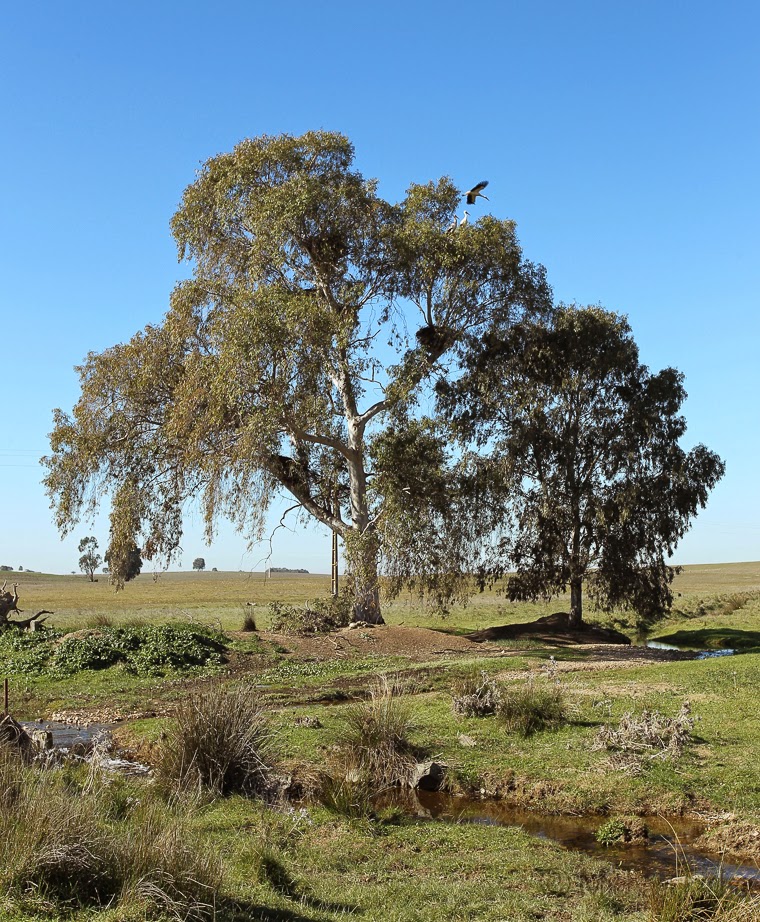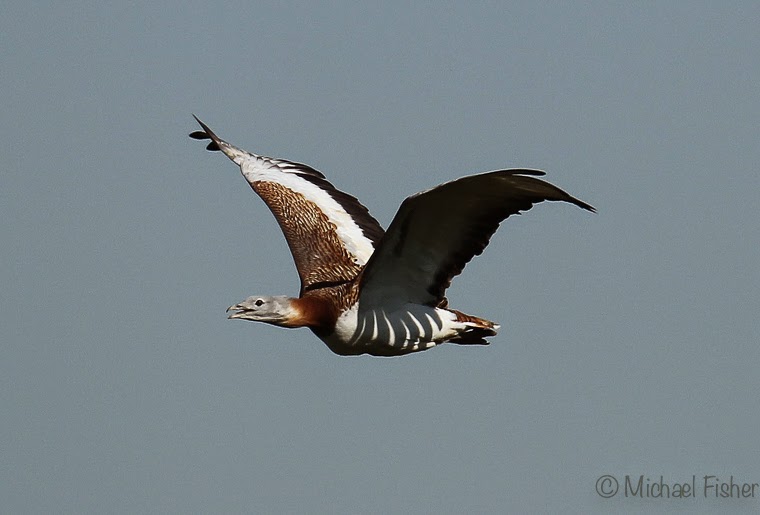Our journey to Castro Verde, out on the cereal-growing steppe land of the Alentejo, will need a night stop; we decide to head for the Barragem (reservoir) Monte da Rocha.
For many years, we have made the journey to Castro Verde in search of steppe-land birds, especially the Great Bustard.
Although we have always managed to see them, photographs have been a problem as they are so shy.
The last visit was blighted by heat haze, a huge problem on the steppe that is magnified when using large lenses on the camera.
For many years, we have made the journey to Castro Verde in search of steppe-land birds, especially the Great Bustard.
Although we have always managed to see them, photographs have been a problem as they are so shy.
The last visit was blighted by heat haze, a huge problem on the steppe that is magnified when using large lenses on the camera.
The sunset at Monte de Rocha

As the sun rises in the early morning, so does the mist.
Within minutes, it resembles a sunset rather than a sunrise as the mist thickens.
This is a typical view of the Alentejo steppe. There is a noticeable lack of trees or scrub. The soil is impoverished and clearly dominated by dryland arable crops.
In fact, the soil is so poor that rotation is needed. For long periods, the land is fallow, and during these times, it is used as a natural pasture.
The winter water courses and lagoons are havens for birds such as Snipe, Herons, Black and White Storks and obvious watering grounds for many more birds and stock.
A few large trees are growing out here; in the central area, you find Eucalyptus trees grown around farm buildings that make excellent nest sites for the increasing population of White Storks. Holm Oaks are the other tree species to be found in any number.
The White Stork is a popular bird with the Portuguese people. Here, one is welcomed back to the nest site by its partner, the nest built on a derelict wind-driven water pump. Although the wind pumps stand rusting, the wind still blows out here in winter. The days are warm and clear, but the nights are cold.
We travel many minor roads, once cobbled and now coated with macadam, still looking for the elusive Great Bustards and encountering travellers. Life on the steppe has changed a little!
We pass through the lovely white and blue villages. There are few people around.
On hillsides, there are Holm Oaks and derelict farms. Wildflowers growing in their thousands make a good meal for the sheep. Late January is a picture!
In this vast area, even the Shepherd and his dogs are motorised.
Among the roaming stock, Cattle Egrets look for food.
A Corn Bunting, but still no Great Bustards!
Then we stop to photograph overwintering Lapwings. In the distance, we see fifty to sixty Great Bustards descending. We are excited to see so many.
This area holds most of Portugal's population, which is said to be about one thousand individuals.
The Great Bustard is one of Europe's most giant birds and one of the World's heaviest flying birds.
Getting close is impossible. They see you from afar. Some birds have landed on our side of the hill crest, enabling distant photographs.
We have sat tight for a long time, hoping they may come closer. Then we are rewarded; further, along our little lane, the flock is flying across to another hillside.
The Great Bustard is threatened (status vulnerable) and has already disappeared from several Countries.
It is only found in extensive cereal-growing steppe land and highly depends on traditional cultivation practices.

As said before, these birds are heavy; one Spanish bird weighed 42 pounds.
The life span average is about 10 years, some to 15 years,
the oldest recorded is a staggering 28 years.
Watching the final birds fly across the lane, we reflect on how lucky we have been to see so many gathered together in their winter flock.
The elusive Great Bustard. At last, photographs!
Another fantastic day in Nature!




















No comments:
Post a Comment